Insights
What is conversational AI, and how does it work?

Insights

From OpenAI’s GPT chatbots to Google’s Bard , AI-based technology has created quite a buzz lately.
And while computer programs that can write entire PHD theses or hack their way into someone’s phone made for good headlines, the reality of AI-based chatbots is a lot more pragmatic (but definitely not less exciting).
Conversational AI is a type of artificial intelligence that lets humans interact with computers as if they were talking to other people. It can mostly be found in chatbots (also called bots or virtual assistants). Virtual assistants can be found in pretty much any digital space, from a live chat on a website to a bot in a messaging app on your phone, in your car, in your home on a smart speaker, or even at an ATM.
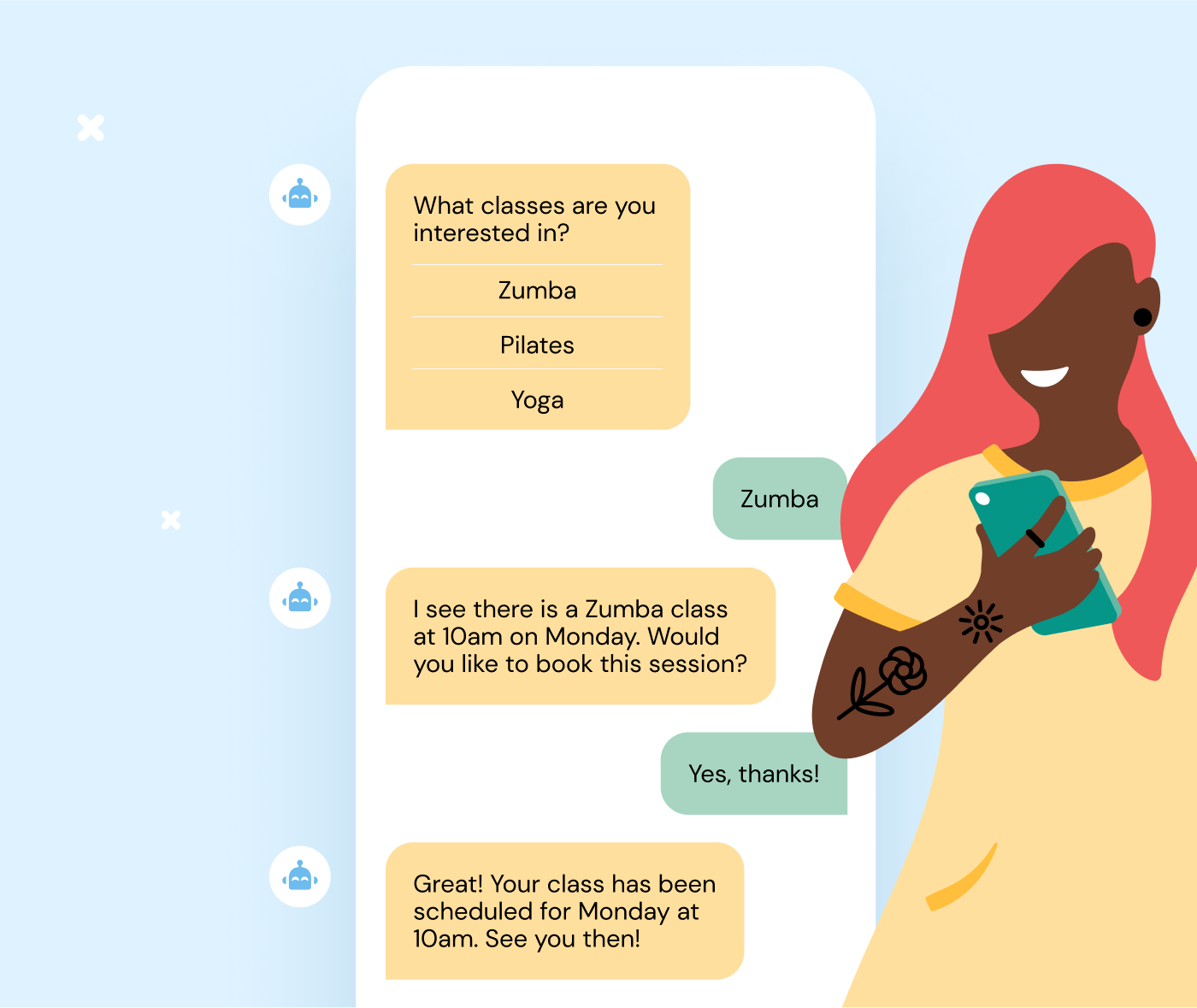
Conversational AI chatbots stand in stark contrast to conventional chatbots, your typical “click bots”. Click bots are the most basic type of chatbots that use pre-programmed answers to certain pre-set keywords.
Let’s say a basic e-bike chatbot has been programmed to display a link to the product website if anybody uses the keyword “new e-bike”. If a customer asks for “new wheels” instead, the chatbot won’t be able to respond. Even though to us humans, it may be clear that “new wheels” refers to a “new e-bike”, basic bots aren’t able to understand that the intent is the same.
A conversational AI chatbot, on the other hand, uses natural language processing (NLP), machine learning, and conversational design, which enables it to have a better understanding of human intent and answer questions more naturally. This type of chatbot will be able to understand that “new wheels” and “new e-bikes” mean the same thing. They’ll also use more engaging and smooth expressions to interact with users.
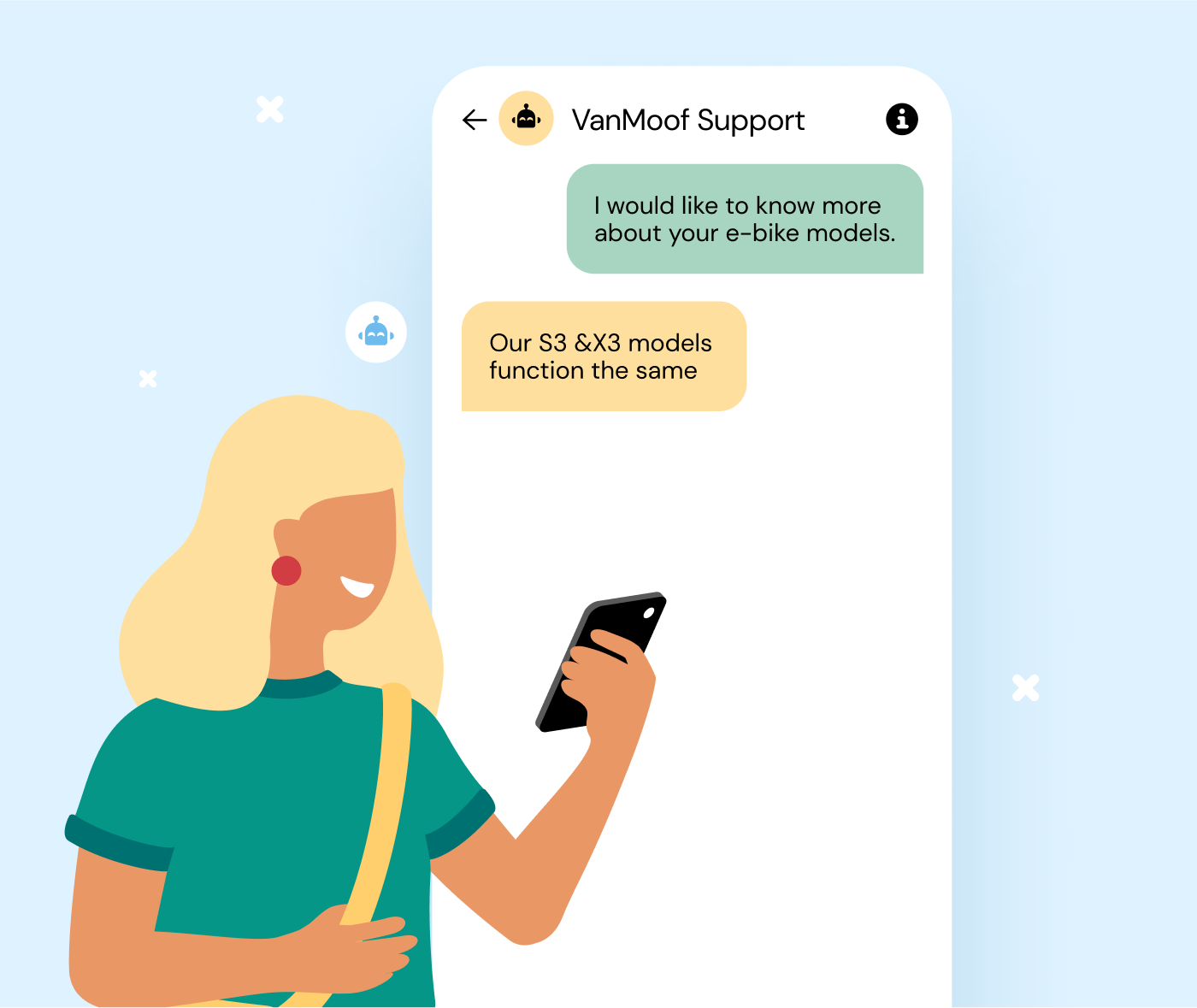
NLP and machine learning enhance a conversational AI chatbot’s capabilities to understand human intent. Conversational design empowers the bot to answer more naturally, with more human-like expressions.
NLP enables a computer program to understand human speech and text and reply like a person would. For this, conversational AI chatbots use natural language understanding (NLU) and natural language generation (NLG).

NLU helps the bot understand the context of human language, such as syntax, intent, or semantics. NLG generates text or speech in a language that humans can understand.
The better the chatbot’s NLP capabilities are, the smoother the interaction between bots and humans will be.
Conversation design is the way in which the flow of the conversation between chatbots and humans is designed. Conversation design combines AI, NLP, user experience design, writing, linguistics, voice, and motion to ensure that the human-bot interaction is as smooth and natural as possible.
Because conversational AI bots have more advanced interaction skills, they can take over more tasks and improve automation processes in companies and organizations.
Juniper Research estimates that the adaptation of chatbots could save the healthcare, banking, and retail sectors 11 billion U.S. dollars per year by 2023.
It’s no surprise that you can already find conversational AI in many different industries and for several use cases.
E-commerce companies are one of the biggest chatbot markets. They mainly use conversational AI chatbots to support their customer service teams.
Here, they can answer FAQs about products or delivery status, and thus help customers faster. But conversational AI bots in e-commerce can also increase revenue.
Conversational AI chatbots are, for example, very skilled at re-engaging customers that haven’t completed their purchases to drive sales and reduce the number of abandoned shopping carts.
Current research found that the retail sector will benefit the most from chatbots. In 2023, according to experts, over 70% of chatbots accessed are retail-based.
In fact, retailers are already being very creative when it comes to using chatbots. French supermarket chain Intermarché, for example, worked with Chatlayer by Sinch to develop a recipe bot that inspires customers, and reached a 59% engagement rate. In an industry where engagement levels are typically low, this made Intermarché stand out from its competitors.
The use of chatbots in HR is widespread. Around 92% of HR teams say that chatbots will be important to help employees find information in the future.
The Belgian wealth management company, Foyer, is already putting this to use in their HR department. Foyer uses a conversational AI chatbot from Sinch Chatlayer to answer the questions of the company’s 1,600 employees, 24/7, in several languages.
With its capabilities to send personalized messages to employees, the bot has also increased employee satisfaction at the company.
From online banking to trading apps to mobile payments, many customers enjoy the perks of being able to handle their finances online and on the go. Globally, almost 29% of internet users access online financial services at least once a month.
For financial institutions, automating some of their services has proven beneficial. Rawbank, a $2.1 billion-revenue bank in the Democratic Republic of Congo, works with Sinch Chatlayer to streamline their customer support and make their teams more efficient.
The multi-intent development of the conversational AI chatbot supports over 50 use cases and handles over 4,000 messages per month.
The insurance industry was one of the early adopters of conversational AI, with very positive responses from customers. Even back in 2019, 44% of consumers felt comfortable making an insurance claim with a bot.
To this day, working with AI bots to pre-qualify claims is one of the biggest use cases for chatbots in the insurance industry. Belfius, for example, is a Belgian insurance company that services 3.5 million customers. They started using a conversational AI chatbot from Sinch Chatlayer to automate their claiming process.
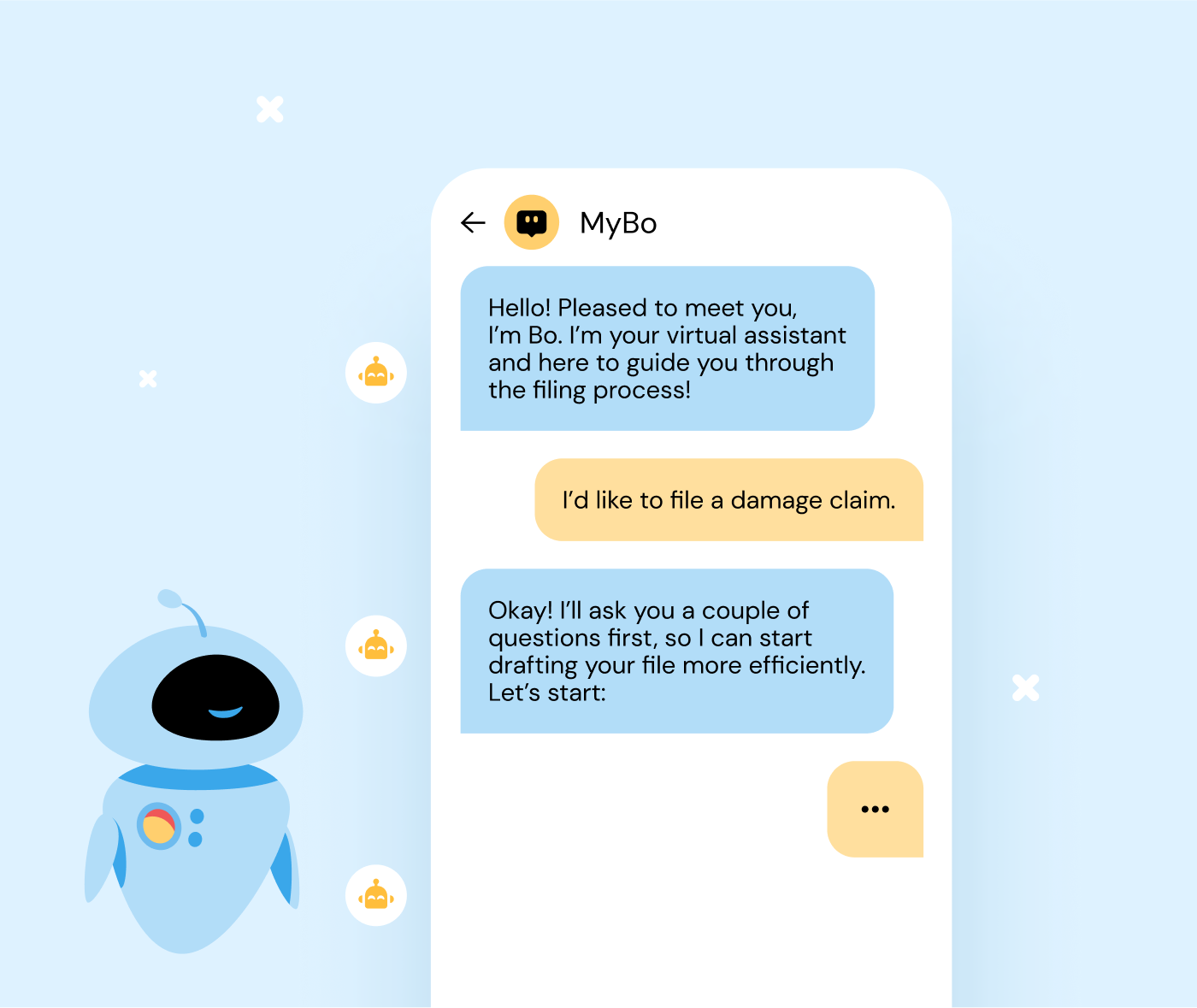
The bot manages 2,000 claims per month and the now completely automated process delivers consistent results.
Conversational AI chatbots are also quite common in tourism, whether it’s with airlines, hotels, or travel agencies. The bots can help customers book reservations, send confirmations, and provide general information to travelers.
The European Commission, for example, offers a travel program to help young people explore Europe. The program is very popular, and the organization soon realized that it became too much for its employees to handle the large number of incoming queries, especially in different time zones and multiple languages.
They partnered with Sinch Chatlayer to design a conversational AI chatbot that offered real-time support via web channels 24/7. The bot now handles 80% of incoming requests.
We were able to provide reliable responses to thousands of people.
European Commission
Electric vehicles are in high demand right now, and e-mobility companies are struggling to keep up. That’s why e-mobility providers have started using chatbots to support their customer service teams, answer customer queries faster, and provide easy access to services.
Bizbike, Belgium’s biggest e-bike provider, uses a conversational AI chatbot from Sinch Chatlayer to answer FAQs and set up appointments for service visits.
In its first two months alone, the bot was able to answer 54,000 messages, and saved Bizbike’s customer service team 40 hours.
Conversational AI is also used by many education providers. With the rise of online education, it’s become more common for online learners to interact with chatbots.
As many educational offers had to move online during the pandemic, students found out that they enjoyed the flexibility of online classes. For schools and institutes, offering online learning helped them expand their curriculum to a larger target audience. But handling online classes and inquiries simultaneously can be very time-consuming, especially if queries come outside business hours.
That’s why Yellow Class, an organization from India that offers free hobby classes for children, uses a WhatsApp chatbot to answer common customer questions.
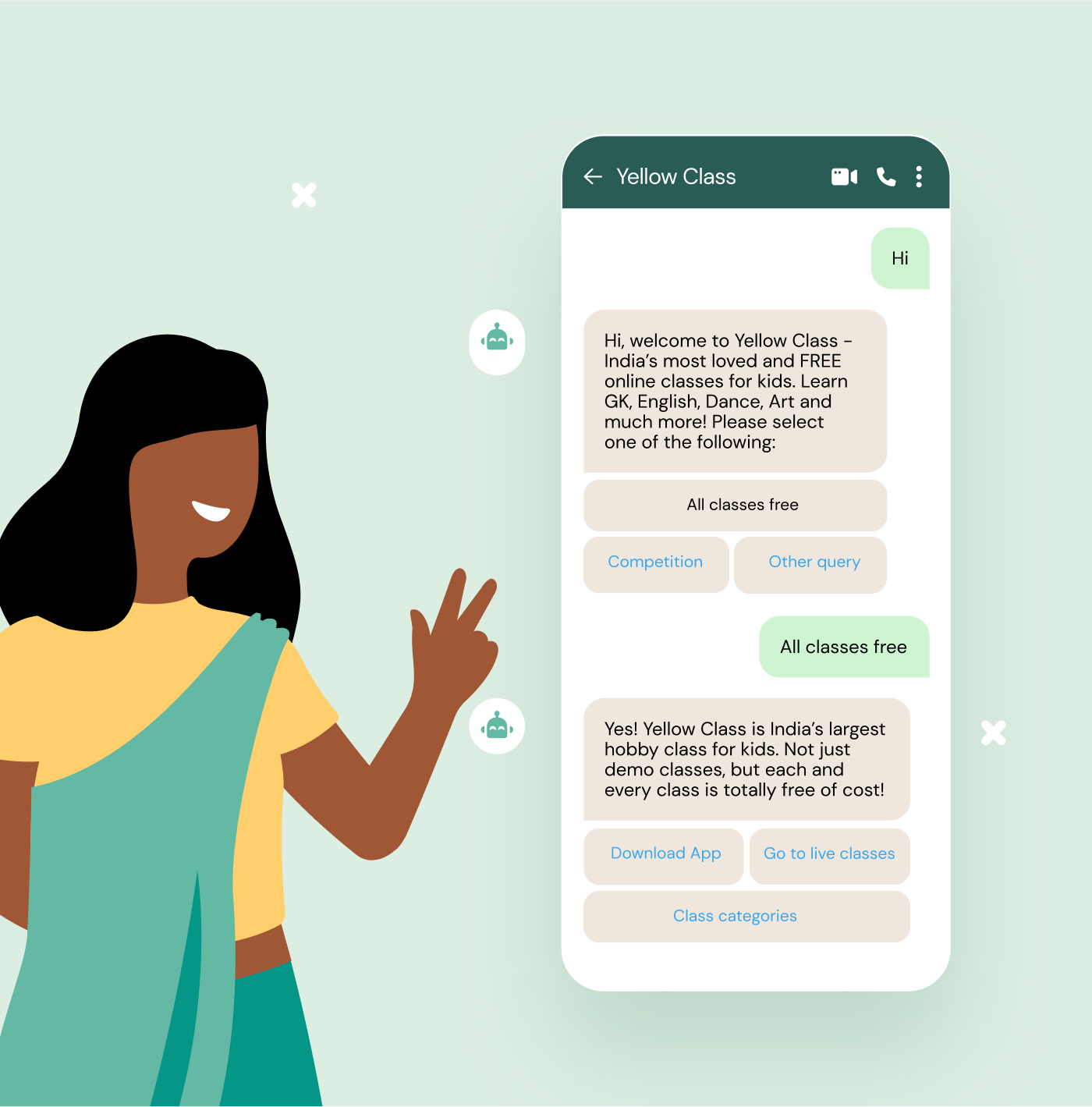
With the chatbot solution, Yellow Class was able to assist more than 35,000 users and complete 150,000 conversations.
The COVID-19 pandemic presented some of the biggest challenges to date for healthcare providers. High demand, shortage of staff, and supply chain issues made it very difficult for providers to offer patients prompt and personal care. That’s exactly where conversational AI came in.
The Mexican health care organization, Salud Digna, decided to use a conversational AI chatbot on WhatsApp to answer FAQs and help their patients schedule appointments faster.
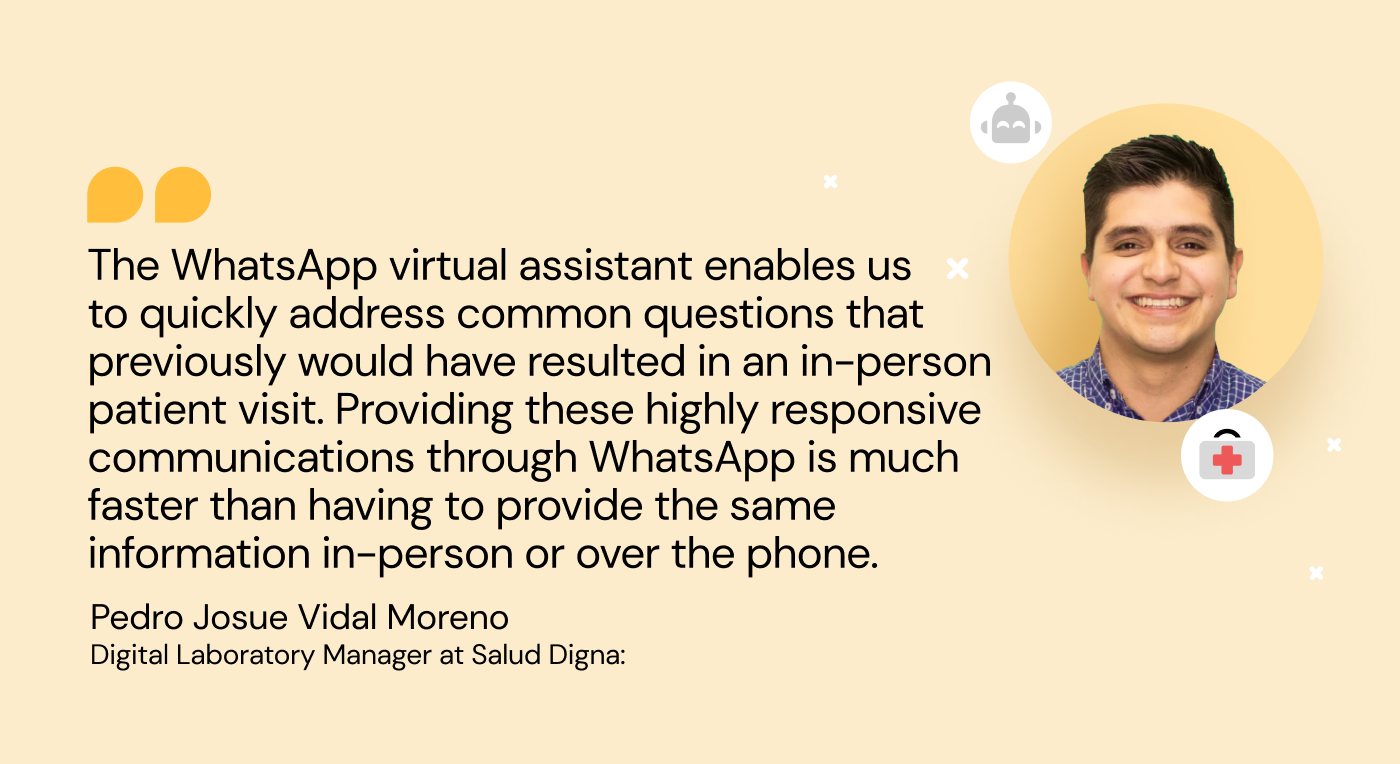
The bot was able to handle most incoming queries, and 89% of their patients don’t require agent support anymore.
The internet of things (IoT) uses conversational AI, mainly in the form of voice assistants, like Alexa or Siri. In 2022, on average, 26% of internet users between 16 and 34 years used voice assistants to find information.
However, there are many other IoT use cases for conversational AI. For example, the technology can be used in navigation systems, or in wearable devices, like fitness trackers.
Providing high-quality conversational AI technology isn’t without challenges.
Designers of conversational AI chatbots must make sure their bots are safe and secure when handling user data. High-quality bots will have several safety features in place to make sure user data is protected.
When designing conversational AI chatbots, it’s important to be mindful of the ethical issues around the technology. Nobody wants their chatbot to insult customers, use inappropriate language, or be biased toward a target group. It’s therefore critical to design conversational AI chatbots with ethics in mind, says Joachim Jonkers, Chief Product Officer at Sinch Chatlayer.

One of the biggest challenges for conversational AI are customer expectations. On the one hand, some consumers have very low expectations about chatbots because they’ve only had bad experiences with very basic bots. On the other hand, others imagine a chatbot to be a highly advanced form of self-learning artificial intelligence and are disappointed when their expectations aren’t met.
Companies should make sure to set the right expectations from the get-go.
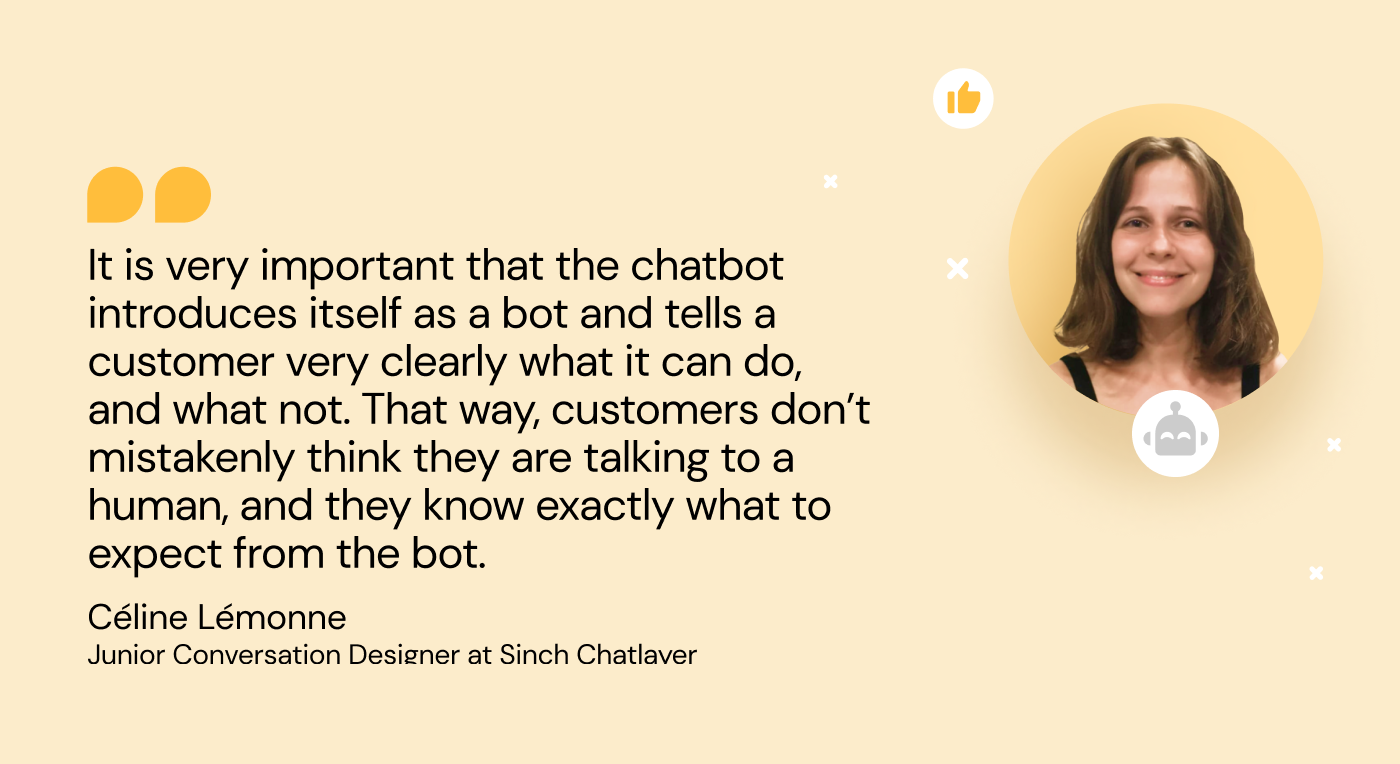
Conversational AI has made big advances in the past years that have resulted in better-quality bots, an improved user experience, and tangible benefits for businesses and organizations.
Are you thinking about launching a chatbot at your company but don’t know where to start? Learn how to choose the right AI platform for your business and how to kick off your chatbot project.